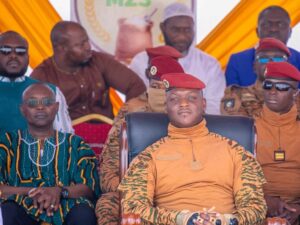Burkina Faso: Assessment and outlook of cotton production
During this week’s Council of Ministers chaired by Captain Ibrahim Traoré, President of the Transition and Head of State, several crucial matters for the nation’s development were examined, and significant reports were adopted. Among these issues, the assessment of the 2023-2024 cotton campaign and the forecasts for the 2024-2025 campaign were major points of discussion, according to Jean Emmanuel Ouédraogo, Minister of State and Government Spokesperson.
The Minister of Commerce, Serge Gnaniodem Poda, presented the results of the 2023-2024 cotton campaign, marked by a production of 383.144 tons of seed cotton. This figure represents a significant improvement in yields per hectare, with an increase of about 25%, reaching 827 kilograms per hectare for conventional seed cotton.
« This increase in yields is the result of sustained efforts and the commitment of the producers », Minister Poda explained, highlighting the importance of improved agricultural practices and favorable climatic conditions that contributed to this performance.
For the upcoming 2024-2025 cotton campaign, the forecasts are optimistic. The government anticipates a production of 595.000 tons of seed cotton. To achieve this ambitious goal set by President Ibrahim Traoré, the government has allocated a subsidy of 10 billion CFA francs to assist producers in purchasing necessary inputs.
This financial assistance aims to encourage increased production and support producers in facing economic and climatic challenges. Minister Poda expressed confidence in the farmers’ ability to meet the challenge and achieve the set goals with this support.
The growth of cotton production is crucial for the Burkinabe economy, as cotton represents a significant portion of the country’s exports. However, challenges abound, particularly in terms of resource management and resilience to climatic hazards.
The government remains committed to implementing policies and support measures to ensure the sustainability and competitiveness of the cotton sector. The subsidy for input purchases is a concrete example, aiming to reduce costs for producers and promote increased and higher-quality production.






